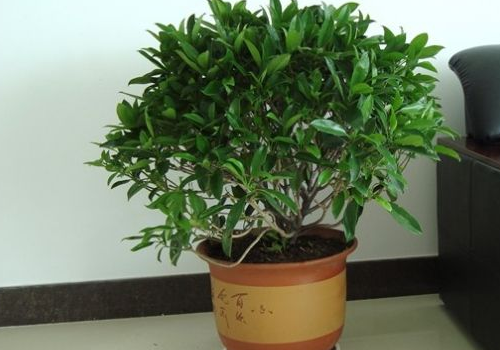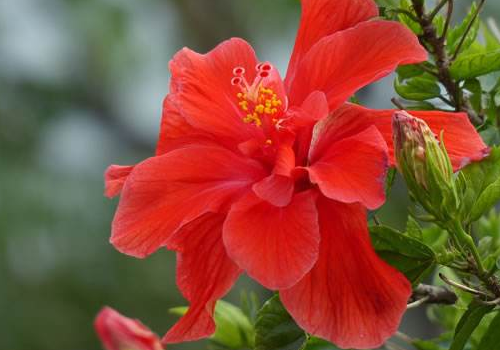The causes of the yellowing of asparagus leaves and how often they are watered
Asparagus, this is an ornamental plant, is a lot of people like, at home to see green plants, how good, then the reason why asparagus leaves yellowing and how to deal with it? How often do you water:
The reasons for the yellowing of the leaves of asparagus and its treatment:
1. Overwatering
The watering principle of asparagus is to see dry and wet, and then water it after it is dry. Especially in winter, the amount of water should be reduced, and when watering, it should not be watered into the heart of the tree.
2. The direct sunlight is too strong
Asparagus likes warmth, fear of cold, light and fear of hot sun exposure. If the leaves are yellow and their shins are soft and cannot stand upright, look at whether they are rotten, and if they rot, cut them off and clean them up in time. Then turn over the soil, pour the right amount of water, put the plant in a ventilated and cool place for a period of time, it will naturally grow new buds.
3. Insect pests
The main pest of asparagus tree is red spider, and there are dense small yellow spots and small yellow spots on the surface of the leaves. Spiders often hide in branches, the back of leaves or dense places, pull the net hidden, manual capture is relatively easy. If it is treated with chemicals, 20% trichloroacarol emulsion can be used to spray the solution by adding 8-1000 times of water.

How often do the dragon beard trees be watered:
Water every 3 to 5 days to keep the substrate moist. Most areas are high-temperature and dry in summer, so you can spray water on the leaves with fine-hole sprayers after 10:00 and 6pm every day to protect the beautiful and bright leaf color. Winter dormancy period to stop fertilization, control watering, generally placed indoors over the winter, can be watered every ten days and a half month, to maintain the basin soil slightly dry, so that it is safe to survive the winter.
The reason for the yellowing of asparagus leaves is introduced here, we should pay attention to the time of watering.
What about the yellowing of asparagus leaves? the solution of yellowing of asparagus leaves
The asparagus tree has several names, some people call it the dragon blood tree, some people also call it the mountain and kelp, its leaves are dazzling in the sunlight, therefore, it is liked by many people, then, today, the editor of Fuwo Decoration Network will share with you the solution to the yellowing of asparagus leaves. Analysis and treatment of common causes of yellowing of asparagus leaves: 1. The principle of watering too much asparagus tree is to see dry and wet, and then water it after it is dry. Especially in winter, the amount of water should be reduced, and when watering, it should not be watered into the heart of the tree.
two。 The direct sunlight is too strong.
Asparagus likes warmth, fear of cold, light and fear of hot sun exposure. If the leaves are yellow and their shins are soft and cannot stand upright, look at whether they are rotten, and if they rot, cut them off and clean them up in time. Then turn over the soil, pour the right amount of water, put the plant in a ventilated and cool place for a period of time, it will naturally grow new buds. 3. Insect pest
The main pest of asparagus tree is red spider, and there are dense small yellow spots and small yellow spots on the surface of the leaves. Spiders often hide in branches, the back of leaves or dense places, pull the net hidden, manual capture is relatively easy. If you treat it with chemicals, you can use 20% trichloropropanol emulsion and add 800 times the amount of water to make a solution spray.
Matters needing attention in the cultivation of asparagus: spring, summer and autumn is the exuberant season for the growth of dragon blood tree. during this period, the grower must fully meet its needs for water, nutrients and temperature to make it grow healthily. 1. Soil and fertilizer: Longxu iron has higher requirements for soil, so we should choose loose and fertile soil with good drainage and air permeability and rich in organic matter. It is usually mixed with 5 parts of garden soil, 3 parts of rotten leaf soil, 1 part of mature organic fertilizer and 1 part of river sand. Asparagus does not have a great demand for fertilizer, and compound fertilizer can be applied once or twice a month in the growing season. two。 Watering: asparagus is a sunny, shade-tolerant plant, usually watered for irrigation top watering, to keep the soil moist. 3. Lighting: asparagus not only likes the warm, moist and sunny environment, but also can withstand shade. Of course, it is best to put the flowerpot on the southeast windowsill to fully accept the sunlight. Summer should be properly shaded, with a general illuminance of 40% to 50%. 4. Temperature: the most suitable growth temperature of asparagus iron is 20-28 degrees Celsius. If the summer temperature is high and the temperature is more than 32 degrees Celsius, or if the winter temperature is less than 15 degrees Celsius, the tree will be dormant or semi-dormant. 5. Pruning: asparagus leaves grow divergent, basically do not need pruning, just need to subtract the yellowing leaves in time, so as not to affect the beauty. The leaves of asparagus are yellow.
The yellowing of asparagus leaves may be caused by too much watering. The watering principle of asparagus is to see dry and wet, and then water it after it is dry. Especially in winter, the amount of water should be reduced, and when watering, it should not be watered into the heart of the tree. Excessive direct sunlight can also lead to yellowing of the leaves. If the leaves are yellowed and their shins are soft and cannot stand upright, it is necessary to see if they rot, and if they rot, they should be cut off and cleaned up in time. Then turn over the soil, pour the right amount of water, put the plant in a ventilated and cool place for a period of time, it will naturally grow new buds.
- Prev

Can African jasmine be hydroponically cultured? what are the effects of fengshui?
African jasmine, this is also a kind of plant, is a lot of people like, super good-looking, so this African jasmine can be hydroponic? What are the effects of fengshui: can African jasmine be hydroponically cultured?
- Next

The reason for the yellowing of Fusang flower leaves and its solution is the national flower of which country
Fusang flower, this is also a kind of plant, is a lot of people like, the flowers are relatively large, many people like
Related
- Fuxing push coffee new agricultural production and marketing class: lack of small-scale processing plants
- Jujube rice field leisure farm deep ploughing Yilan for five years to create a space for organic food and play
- Nongyu Farm-A trial of organic papaya for brave women with advanced technology
- Four points for attention in the prevention and control of diseases and insect pests of edible fungi
- How to add nutrient solution to Edible Fungi
- Is there any good way to control edible fungus mites?
- Open Inoculation Technology of Edible Fungi
- Is there any clever way to use fertilizer for edible fungus in winter?
- What agents are used to kill the pathogens of edible fungi in the mushroom shed?
- Rapid drying of Edible Fungi

